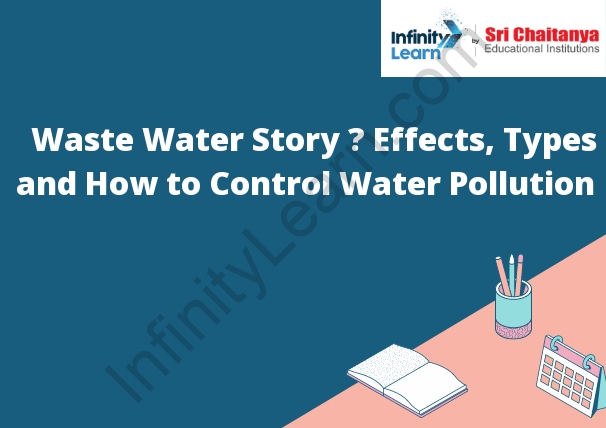Table of Contents
What is Waste Water? ;
Waste water is any water that has been used and is now not fit for its original purpose. This can be water from homes, businesses, industries, or anywhere else. It can be from a variety of sources, including runoff, stormwater, wastewater, and septic tanks.

Effects of Contaminant on Quality of Water:
The quality of water is affected by the presence of contaminants. Contaminants can be inorganic or organic. Inorganic contaminants include metals (such as lead, mercury, and arsenic), nitrates, and chloride. Organic contaminants include pesticides and volatile organic compounds (VOCs).
Inorganic contaminants can cause health problems if they are ingested or if they are absorbed through the skin. Metals, in particular, can be toxic. Nitrates can cause health problems, especially in infants, because they can be converted to nitrites in the body. Chloride can cause health problems if it is consumed in large quantities.
Organic contaminants can also cause health problems if they are ingested or absorbed through the skin. Pesticides can be toxic, and VOCs can cause health problems if they are inhaled.
Types of Water Pollution Depending on Different Source:
There are many types of water pollution, depending on the source. Some of the most common types of water pollution include:
1. Agricultural runoff – This type of pollution is caused by fertilizer and pesticides from agricultural fields that run off into nearby waterways. This can cause algal blooms, which can deplete the water of oxygen and kill fish and other aquatic life.
2. Industrial runoff – This type of pollution is caused by runoff from factories and other industrial facilities. It can include pollutants such as heavy metals, acid rain, and chemicals.
3. Municipal wastewater – This type of pollution is caused by wastewater from cities and towns. It can include pollutants such as sewage, chemicals, and metals.
4. Stormwater runoff – This type of pollution is caused by runoff from rain and snow. It can include pollutants such as oils, metals, and pesticides.
5. Trash and debris – This type of pollution is caused by trash and debris that is dumped into waterways. It can include plastics, Styrofoam, and other pollutants that can harm aquatic life.
Wastewater Management:
The treatment and management of wastewater is a critical component of any society. Wastewater is water that has been used and contains pollutants that must be removed before the water can be released back into the environment. The wastewater management process begins with the collection of wastewater from homes, businesses, and other sources. The wastewater is then treated to remove the pollutants before it is released back into the environment.
There are a number of different treatments that can be used to remove the pollutants from wastewater. The most common treatment is a process called primary treatment. In primary treatment, the wastewater is screened to remove large objects and then treated with chemicals to break down the organic matter. The wastewater is then passed through a series of filters to remove the remaining pollutants.
Other treatments that can be used to remove pollutants from wastewater include:
Secondary treatment: In secondary treatment, the wastewater is treated with bacteria to break down the organic matter.
In secondary treatment, the wastewater is treated with bacteria to break down the organic matter. Tertiary treatment: In tertiary treatment, the wastewater is treated with a variety of processes to remove the remaining pollutants.
In tertiary treatment, the wastewater is treated with a variety of processes to remove the remaining pollutants. Advanced treatment: In advanced treatment, the wastewater is treated with a variety of processes to remove the most pollutants.
In advanced treatment, the wastewater is treated with a variety of processes to remove the most pollutants. Membrane
How to Control Water Pollution:
Water pollution is a global problem that continues to worsen as the world’s population and economy grow. Pollution occurs when harmful or poisonous substances enter water bodies, making the water unfit for human use or wildlife. Water pollution threatens both public health and the environment.
There are many ways to control water pollution, but the most important step is to reduce the amount of pollutants that enter water bodies. This can be done by implementing effective waste management systems, regulating industries that pollute water, and educating the public about how to properly dispose of their waste. Governments and communities must also work together to clean up polluted areas and restore the health of the aquatic ecosystems.
Ultimately, it is up to each individual to do their part to reduce water pollution. Everyone can make a difference by properly disposing of their waste, conserving water, and choosing environmentally friendly products. With everyone’s help, we can reduce the amount of water pollution and protect our planet’s precious resources.






